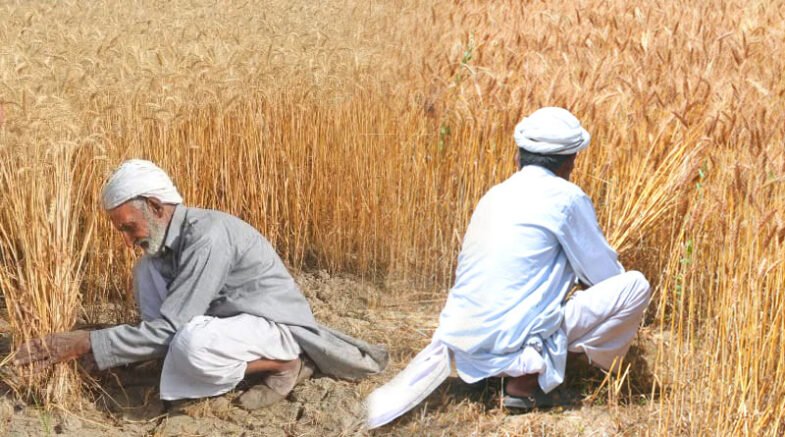For the fiscal year 2022–2023, the government sought to sow wheat on 22.85 million acres nationwide, including 16.48 million acres in Punjab, according to official data.

Given that the Met office has predicted heavy rains for two weeks beginning in the third week of March, goal for wheat production in Pakistan for the current fiscal year is likely to be exceeded by 1.7 million tonnes.
According to officials, Punjab’s wheat production is expected to suffer significantly during the current fiscal year 2022–2023 as a result of the negative effects of climate change and crop substitution—the sowing of other crops other than wheat in order to increase profitability.
In contrast to the anticipated target of 28.4 million tonnes, he continued, the production of wheat is likely to remain at or around 26.7 million tonnes.
In addition, there will be a wheat shortage in the upcoming fiscal year, forcing the government to rely on wheat imports to meet domestic demand for staple foods. Wheat imports will increase at a time when the nation is experiencing its worst-ever dollar liquidity crisis.
“To meet domestic and Afghan needs, there will be no choice but to import 3-3.5 million tonnes of wheat for the upcoming fiscal year. This exceeds the 2.6 million tonnes of wheat import goal for the current fiscal year, “When speaking with media in this location on Friday, top official sources confirmed.
When asked about the wheat production target and the causes of crop substitution in Punjab, Secretary Ministry of National Food Security & Research responded that the target had not yet been revised.
However, he noted that while the actual number will be known after harvest, it is anticipated that wheat production will remain at or near 27 million tonnes. He continued by saying that maize and oilseeds had replaced other crops primarily as a result of higher prices.
For the fiscal year 2022–2023, the government sought to sow wheat on 22.85 million acres nationwide, including 16.48 million acres in Punjab, according to official data.
However, according to the most recent estimates, only 16.01 million acres in the province could be planted, which represents a 97.17 percent success rate. It is important to note that Punjab experienced crop substitution as a result of farmers switching to oil seeds in an effort to increase their returns.
In an interesting development, Sindh outperformed its goal for sowing wheat, which was set at 2.79 million acres for the current fiscal year. Instead, 2.945 million acres of the staple food were planted. Initial estimates indicate that Sindh has harvested 25% of its cultivated land, with a 40-ton yield per acre.
Only 87.07 percent of the intended target was met in KP, where wheat was planted on an area of about 1.933 million acres as opposed to the intended target of 2.22 million acres. Balochistan’s wheat sowing goal was only 77.21 percent met because only 1.05 million acres of the intended 1.36 million acres were planted with wheat.
The government will need to import at least 3.5 to 4 million tonnes of wheat in the upcoming fiscal year at a time when the nation is experiencing a severe dollar liquidity crunch and the projected wheat production stays around 26 million tonnes.
The Ministry of National Food Security & Research recently received a forecast from the Met Office warning that the Pakistan may experience various heatwave spells over the course of the next three months, including March, April, and May 2023, putting the anticipated wheat production target in jeopardy.
In the previous fiscal year, the heatwave had a negative impact on wheat production of at least 10 to 12 percent. One million tonnes of wheat for Afghanistan were included in the estimated need for wheat imports.
